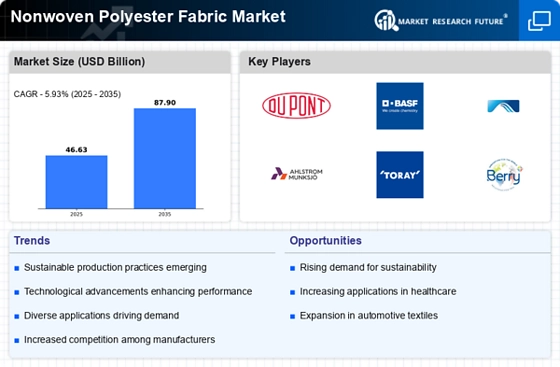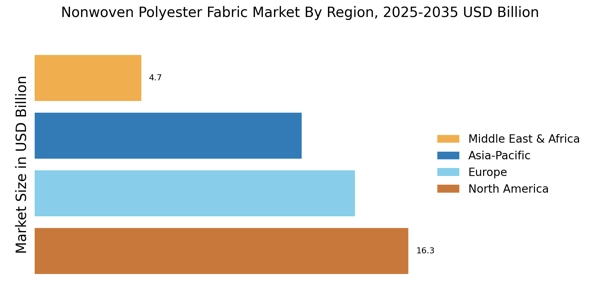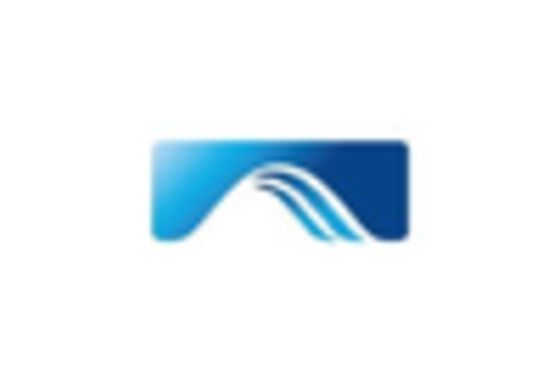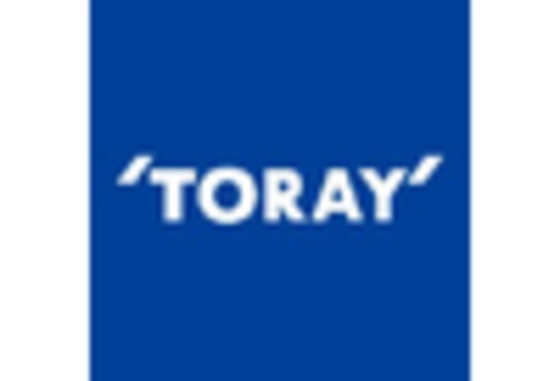Regulatory Support
Regulatory support is playing a crucial role in shaping the Nonwoven Polyester Fabric Market. Governments worldwide are implementing policies that promote the use of nonwoven materials, particularly in sectors such as healthcare and construction. These regulations often focus on safety standards and environmental impact, encouraging manufacturers to adopt nonwoven polyester fabrics that meet stringent criteria. Market data reveals that regions with supportive regulatory frameworks are experiencing faster growth in the nonwoven sector, with an estimated increase of 4% in market size. This regulatory environment not only fosters innovation but also enhances consumer confidence in nonwoven products. As regulations continue to evolve, they are likely to further propel the Nonwoven Polyester Fabric Market, creating opportunities for manufacturers to expand their offerings.
Consumer Preferences
Shifting consumer preferences are emerging as a significant driver for the Nonwoven Polyester Fabric Market. As consumers become more discerning about the materials used in products, there is a growing inclination towards nonwoven polyester fabrics that offer both functionality and aesthetic appeal. This trend is particularly evident in the fashion and home textiles sectors, where consumers are increasingly seeking sustainable and high-performance materials. Market data suggests that the demand for nonwoven polyester in these sectors is expected to rise by approximately 7% over the next few years. Manufacturers are responding by innovating and creating products that meet these evolving preferences, thereby enhancing their market position. This shift in consumer behavior indicates that the Nonwoven Polyester Fabric Market must remain agile to capitalize on emerging trends.
Diverse Applications
The versatility of nonwoven polyester fabrics is a key driver for the Nonwoven Polyester Fabric Market. These materials are utilized across various sectors, including automotive, healthcare, and construction, due to their unique properties such as durability, lightweight, and resistance to moisture. For instance, in the healthcare sector, nonwoven fabrics are increasingly used for surgical gowns and masks, reflecting a growing market demand. Data suggests that the automotive industry is also expanding its use of nonwoven polyester for interior applications, contributing to an estimated market growth of 5% in this segment alone. This broad range of applications indicates that the Nonwoven Polyester Fabric Market is well-positioned for sustained growth as it adapts to the evolving needs of different sectors.
Sustainability Initiatives
The increasing emphasis on sustainability appears to be a pivotal driver for the Nonwoven Polyester Fabric Market. As consumers and manufacturers alike become more environmentally conscious, the demand for eco-friendly materials is surging. Nonwoven polyester fabrics, which can be produced with recycled materials, align well with these sustainability goals. This shift is reflected in market data, indicating a projected growth rate of approximately 6% annually in the sector. Companies are investing in sustainable production processes, which not only reduce waste but also enhance brand reputation. Furthermore, regulatory frameworks are increasingly favoring sustainable practices, compelling manufacturers to adapt. This trend suggests that the Nonwoven Polyester Fabric Market is likely to witness a robust expansion as sustainability becomes a core component of business strategies.
Technological Advancements
Technological advancements are significantly influencing the Nonwoven Polyester Fabric Market. Innovations in manufacturing processes, such as spunbond and meltblown technologies, have enhanced the efficiency and quality of nonwoven fabrics. These advancements allow for the production of lighter, stronger, and more versatile materials, catering to a wide array of applications. Market data indicates that the adoption of advanced technologies could lead to a reduction in production costs by up to 15%, thereby increasing profit margins for manufacturers. Additionally, the integration of automation and smart technologies in production lines is streamlining operations, further driving growth. As these technologies continue to evolve, they are expected to play a crucial role in shaping the future landscape of the Nonwoven Polyester Fabric Market.


















Leave a Comment